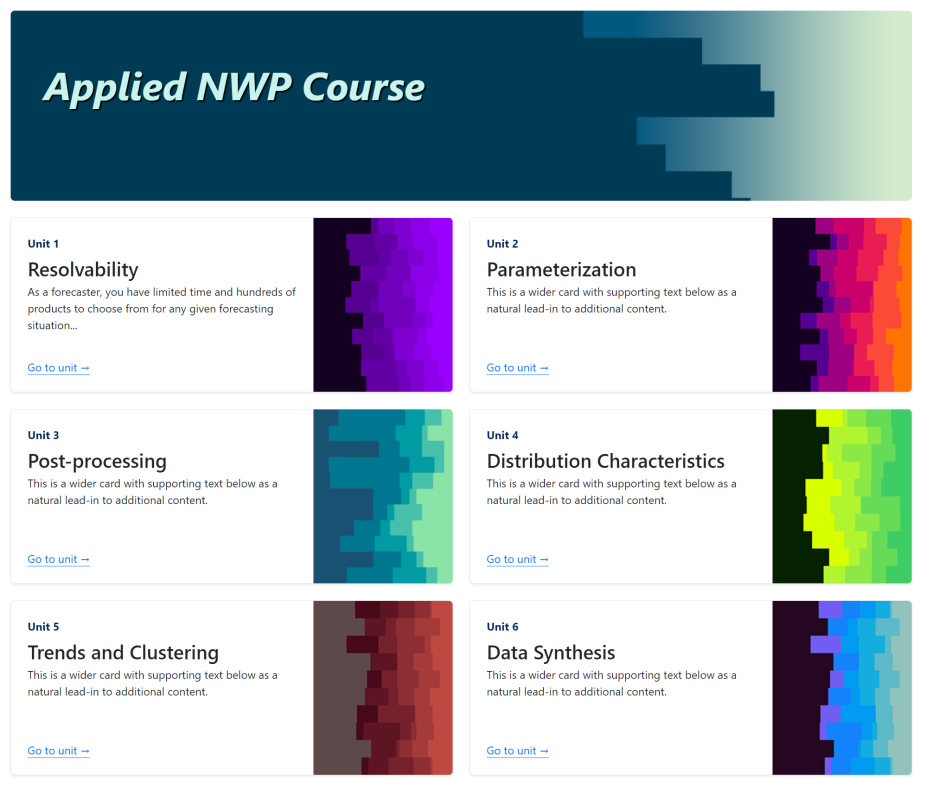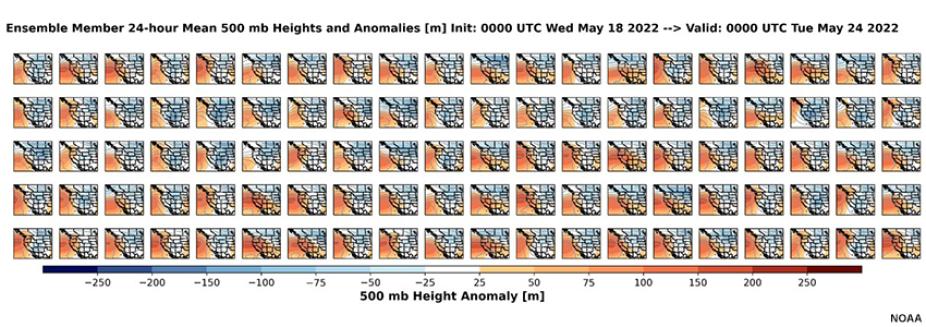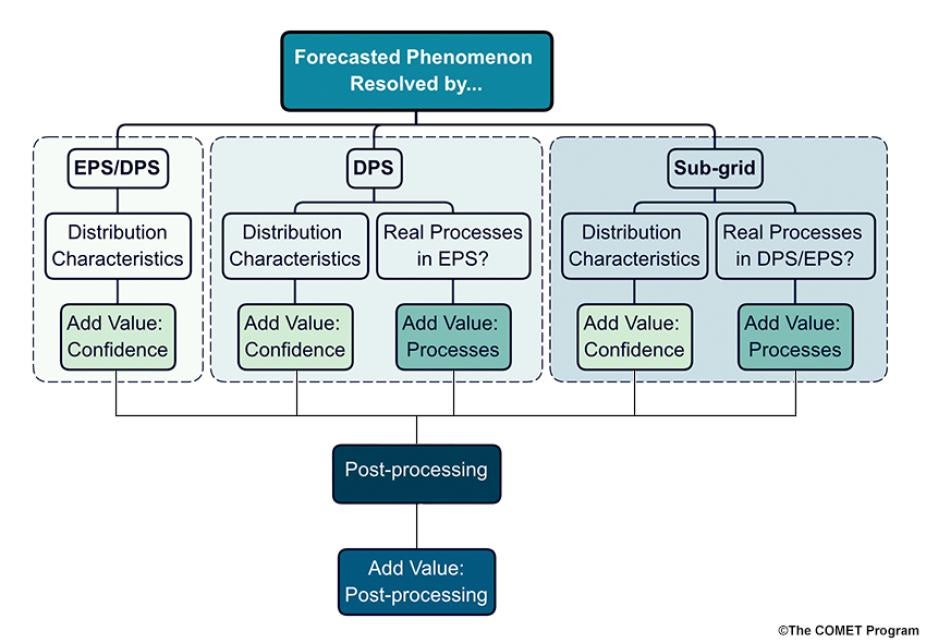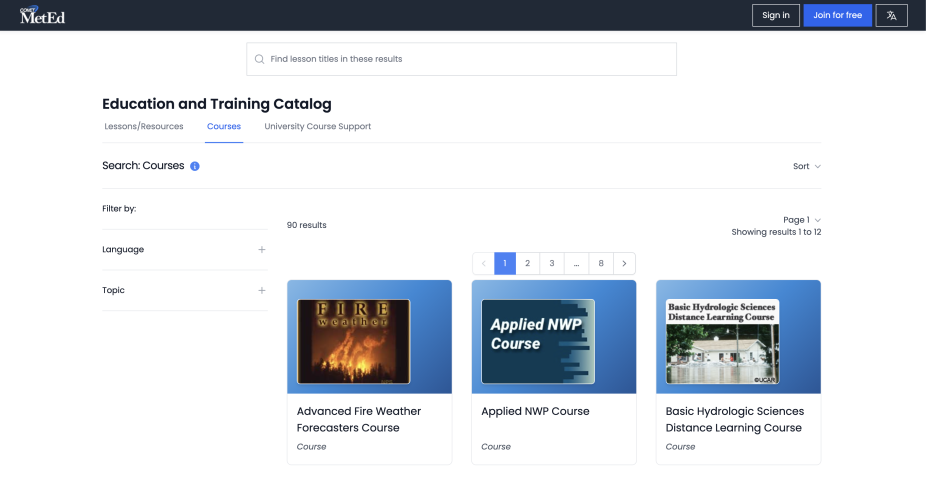Looking to the Future of Forecasting: Applied NWP
The days of providing weather forecasts based solely on Deterministic Prediction Systems (DPSs) are numbered. Weather services are pivoting to decision-support services and impact-based forecasting, and weather forecasters need to advance to keep up with these changes. Our COMET meteorologists and educational designers developed this course to help you develop the skills you’ll need to thrive in this shifting weather forecasting landscape.

Prepare for the future of weather forecasting with COMET's Applied NWP Course.
The future of forecasting: Ensemble Prediction Systems
As a forecaster today, chances are high you’re using DPS models to create a definitive, one-solution forecast for your stakeholders. While this system provides clear, easy-to-digest reports—for example, “today will be partly cloudy with a high of 25 degrees”—its accuracy, and thus, stakeholder trust, can be limited.
Ensemble prediction systems (EPSs) are the future of forecasting, and it’s easy to see why. Instead of the four or five models typically inputted into your forecast, ensemble systems incorporate a hundred or more models to help you create more accurate forecasts that capture the entirety of the possible forecast range.

An example of ensemble panels.
Decision support services
Weather forecasters’ key partners, such as transportation, utilities, agricultural, and disaster management leaders, depend on accurate forecasts when making decisions that impact lives. This is why our role as forecasters is shifting more toward decision-support services. The probabilistic forecast approach, in turn, enables us to analyze a fuller scope of conditions, increasing the accuracy of our forecasts to better support decision-makers and our communities.
Impact-based forecasting
Decision support services stem from impact-based forecasting in which forecasters take all the weather variables and focus on potential impacts, such as icy bridges, flooded roads, and so on. Forecasters using a probabilistic model can examine the ranges and probabilities of certain conditions to create a consistent and accurate report of potential impacts to decision-makers.
Instead of a single forecast value, a forecaster can provide a probability that a threshold value could be exceeded or a probability of certain conditions being met. This helps partners evaluate their own risks and make more informed decisions about how much risk they are willing to assume.

Impact-based forecasting provides decision-makers with the information they need to make more informed decisions for their communities.
Preparing for the future: COMET’s Applied NWP Course
To prepare for these future changes in modeling and to better serve stakeholders, forecasters need to better understand numerical weather prediction (NWP) model outputs and how to accurately apply them to their forecasts. The COMET Program’s free Applied NWP Course—funded by Environment and Climate Change Canada (ECCC)—provides six units in which you’ll hone an understanding of resolvability, post-processing, parameterization, and statistical distribution as applied to your forecasts.

Want to understand this diagram? Take the Applied NWP Course!
We designed this 10+ hour course to be used in a self-paced manner by forecasters or students. By the end of this course, you should be confident in formulating and issuing probabilistic forecasts. You will also know how to apply your deterministic and probabilistic outputs in a way that optimizes your forecast for impact-based decision support services.
For instructors and facilitators
For those of you facilitating a session for your national meteorological or hydrological service, there’s also an optional instructor’s guide available. In this guide, you’ll find additional exercises and homework, extra data, questions to ask your forecasters on shift, and ideas for forum posts or discussion section topics.
How do I take the course?
Are you ready to take on the future of weather forecasting? You can find the course on COMET MetEd, our education and training website, by heading to the Education and Training Catalog and searching for “Applied NWP” under the “Courses” tab.

Find COMET's Applied NWP Course on COMET MetEd along with over 1,000 free weather, water, and climate education and training resources.
You will need a free COMET MetEd account to get started. Signing up takes only a few minutes and gives you access to more than 1,090 free lessons and resources. Plus, as a program funded primarily by the National Oceanic and Atmospheric Administration (NOAA), our content will remain free, and we will never sell your information.
Learn more!
Do you want to learn more about the course before diving in? The course creators provide a great overview of the course and what to expect on the course intro page.
Subscribe to our newsletter and follow us on social media to keep up with the latest COMET news, lessons, job opportunities, events, and more!